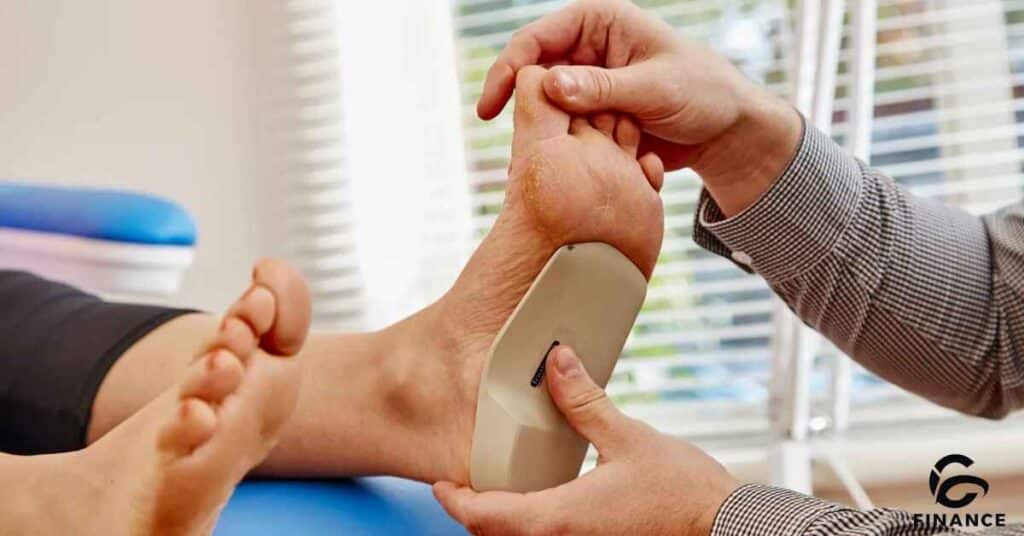Foot pain can disrupt daily life, and custom orthotics provide relief for many. However, the cost of these medical devices can be high, leaving you with out-of-pocket expenses. This financial burden often prevents people from getting the treatment they need.
Navigating insurance to cover orthotics can feel overwhelming, especially with confusing policies and requirements. But securing coverage is possible with the right steps.
This guide breaks down the process, showing you how to get orthotics covered by insurance, so you can relieve pain without breaking the bank. Follow these steps to ensure your orthotics are reimbursed.
Understanding Orthotics and Insurance Coverage Basics
Orthotics are medical devices used to support, align, or correct foot and ankle issues. They can help with pain, improve mobility, and provide relief for conditions like flat feet or plantar fasciitis. Insurance coverage for orthotics varies depending on the policy.
Knowing the basics of both orthotics and your insurance plan can save time and money. Always check your insurance terms before purchasing orthotics.
What Are Orthotics?
Orthotics are custom-made shoe inserts that support the feet. They’re used to treat various conditions, like arch pain, bunions, or back problems caused by poor foot alignment. These devices are tailored to fit your feet and help reduce pressure or correct abnormal walking patterns. Orthotics can provide comfort and pain relief, improving your overall mobility and quality of life.
Types of Insurance That Cover Orthotics
Many insurance plans cover orthotics, but the details can differ. Private health insurance, Medicare, and Medicaid often include coverage for orthotics if they are deemed medically necessary. Some employer-sponsored plans and government programs may also offer partial or full reimbursement.
Before purchasing, it’s essential to understand your specific plan’s requirements, such as preauthorization or a doctor’s prescription.
Step-by-Step Guide to Getting Coverage
Getting insurance to cover orthotics can seem difficult. But by following a few steps, the process becomes simpler. Start by reviewing your insurance plan. Then, work with your doctor to gather the right paperwork. Submit all documents correctly to avoid delays. By understanding the process, you can improve your chances of approval and reduce out-of-pocket costs.
Before You Start
Before starting the insurance process, check your plan to see if orthotics are covered. Review the terms for any restrictions or requirements, like needing a referral from a specialist. Make sure to know your deductible and whether you need pre-approval. Knowing these details upfront will help avoid surprises and make the claim process smoother.
Getting Medical Documentation
You will need medical documentation to prove that orthotics are necessary. This typically includes a diagnosis from your doctor, a prescription for custom orthotics, and medical records showing your condition. Collect all paperwork before submitting a claim to your insurance. Having complete and accurate documents increases the chances of approval without delays.
Pre-authorization Process
Some insurance plans require pre-authorization before they cover orthotics. The timeline for approval varies but can take a few weeks. Required forms include a doctor’s prescription, medical records, and insurance forms. A common pitfall is missing paperwork, which can delay approval. To avoid problems, double-check all forms and make sure they are submitted on time.
Documentation Checklist

To get orthotics covered by insurance, you need to submit specific documents. These show that your treatment is medically necessary. Having all the required paperwork ready will speed up the approval process. It’s important to include both essential and supporting documents. Organizing these in advance helps avoid delays and increases your chances of getting coverage.
Essential Documents
The most important documents include medical records, prescriptions, and proof of previous treatments. Your doctor’s prescription will outline the need for orthotics. Medical records should detail your condition and how orthotics can help. If you’ve tried other treatments before, make sure to include that information as well. These are key for insurance approval.
Additional Supporting Materials
Supporting materials can strengthen your claim. Specialist evaluations provide a detailed diagnosis and confirm that orthotics are necessary. Imaging results, like X-rays or MRIs, can show the extent of your condition. A history of past treatments or therapies also helps prove the need for orthotics. Including these extra documents may improve your chances of getting coverage quickly.
Read This Blog: Andrea Canning Net Worth: The Incredible Journey of a Multifaceted Journalist
Insurance Provider Policies

Each insurance provider has different policies for covering orthotics. It’s important to understand the details of your plan to avoid surprises. Coverage, requirements, and costs can vary widely between companies. Knowing your provider’s rules will help you navigate the process more smoothly and increase your chances of getting your orthotics covered.
Major Insurance Companies
Major insurance companies have different rules about covering orthotics. Some cover more, while others have strict limitations. Policies can vary in terms of what they cover, the need for pre-approval, and which doctors or suppliers are in-network. It’s important to compare plans and confirm details with your provider before moving forward.
Medicare and Medicaid
Medicare and Medicaid cover orthotics in certain cases. To be eligible, you must meet specific criteria, such as having a medical condition that requires orthotics. Coverage limits may apply, such as paying for only one pair a year. The application process can take time, so it’s important to submit all required forms and documents early.
FSA and HSA Options
Flexible Spending Accounts (FSA) and Health Savings Accounts (HSA) can help you pay for orthotics. These accounts allow you to set aside pre-tax money for medical expenses. To get reimbursed, you’ll need receipts and documentation of your purchase. The reimbursement process is usually simple, but you must keep track of all paperwork.
Cost Considerations
When getting orthotics, it’s important to understand all potential costs. Insurance may not cover everything, so knowing what you’re responsible for helps avoid surprises. Plan ahead by checking your policy’s details, like deductibles and copays. Understanding these financial aspects can help you budget for your orthotics and manage your expenses effectively.
Understanding Your Financial Responsibility
Your financial responsibility includes deductibles, copays, and out-of-pocket maximums. A deductible is the amount you pay before insurance kicks in. Copays are small fees you pay per visit or service. The out-of-pocket maximum is the most you’ll pay in a year. Understanding these terms helps you prepare for the total cost of your orthotics.
Reimbursement Process
The reimbursement process involves submitting the correct paperwork to your insurance provider. This usually includes receipts and documentation of medical necessity. Timelines can vary, so check with your provider on how long it takes to get reimbursed. If you don’t hear back, follow up to ensure your claim is processed without delay.
Also Read: Jack Doherty Net Worth (2024): A Complete Analysis of the YouTuber’s Wealth
Common Challenges and Solutions

Getting orthotics covered by insurance can come with challenges. Denials and delays are common, but knowing how to handle them helps. If you face issues, there are steps you can take to resolve them. Understanding these challenges and solutions will help you navigate the process more smoothly and improve your chances of success.
Coverage Denials
Coverage denials happen for several reasons, such as missing paperwork or not meeting medical necessity. To prevent this, make sure you provide all required documents and follow the insurance guidelines closely. If your claim is denied, review the reason carefully. You can often fix the issue and resubmit for approval.
Appeals Process
If your insurance denies coverage, you can file an appeal. Be aware of filing deadlines, as missing them can prevent your appeal. Gather all necessary documents, including medical records and a detailed letter from your doctor. Success often depends on being thorough and persistent. Follow up regularly to ensure your appeal is being reviewed.
Tips for Success
To improve your chances of getting orthotics covered, it’s important to stay organized and proactive. Working closely with your healthcare provider and maintaining clear communication with your insurance company are key. By managing your timeline and keeping thorough records, you can avoid delays and increase the likelihood of approval.
Working with Healthcare Providers
Effective communication with your healthcare provider is essential. Request all necessary documentation, such as prescriptions and medical records, early in the process. Ask for clear timelines on when paperwork will be completed. Regular communication ensures that everything is submitted correctly and on time, which helps prevent issues with insurance.
Insurance Communication
When dealing with insurance, use clear and consistent communication methods, such as phone calls or emails. Keep a record of all interactions, including dates and names of representatives. Follow up regularly to check the status of your claim or appeal. Staying organized and persistent can make the process smoother and more successful.
Alternative Options
If insurance doesn’t cover your orthotics, there are still choices available. Exploring different payment plans can help you manage costs more easily. Discount programs or alternative funding sources may also offer financial relief. Understanding these options allows you to find a solution that works for your budget and needs.
When Insurance Won’t Cover
When insurance won’t cover orthotics, consider setting up a payment plan with your provider. Many companies offer flexible payment options to ease the financial burden. Look for discount programs that may apply to your situation. You can also explore alternative funding sources, such as personal loans or community assistance programs, to help cover costs.
Preventive Strategies
To avoid future coverage issues, start planning early. Review insurance policies carefully before choosing one. Select a plan that offers good coverage for orthotics and related expenses. Keeping track of your benefits can help you maximize what you receive from your insurance. By being proactive, you can reduce out-of-pocket costs in the future.
Conclusion
Getting orthotics covered by insurance can be a challenging process, but it is possible. By understanding your insurance policy and gathering the right documents, you can improve your chances of approval. Don’t hesitate to explore alternative options if coverage is denied.
Staying proactive and organized will help you manage costs and find the right support for your feet. Remember, comfortable feet lead to a more active and enjoyable life. Take action today to get the relief you deserve!

Howdy, editor at FinanceEon.com, brings over a decade of financial journalism experience. He ensures accuracy and insightful analysis, guiding a team on market trends and investment strategies.







